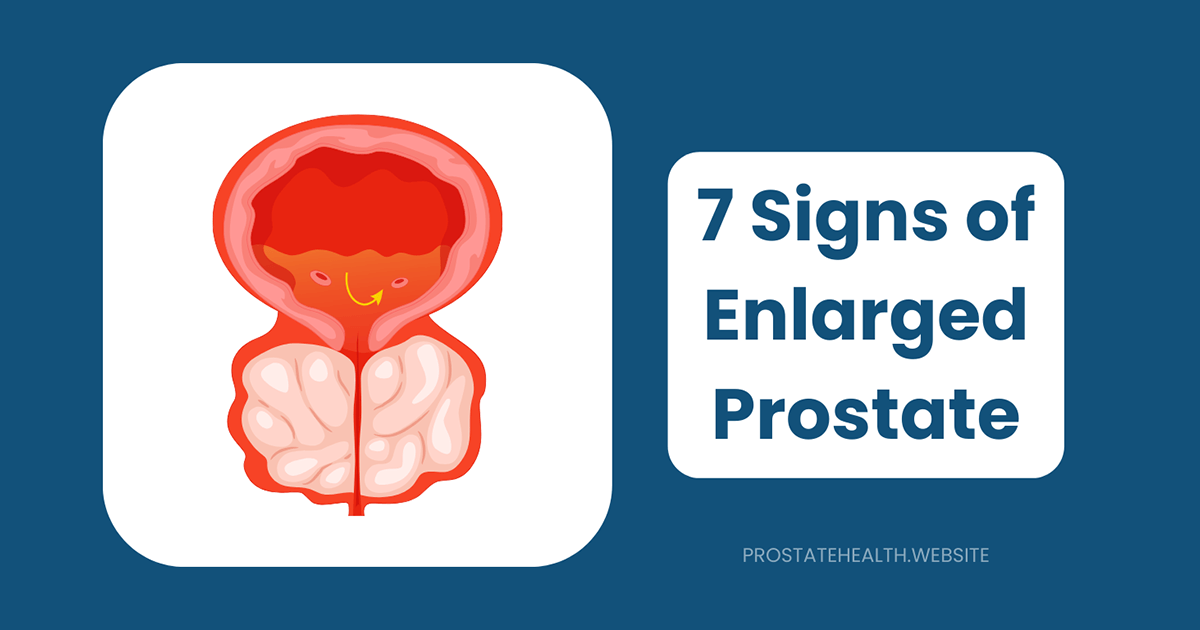Prostate Cancer Staging Explained: What Your Diagnosis Means

Receiving a prostate cancer diagnosis can be overwhelming. Among the flood of information you receive, understanding your cancer’s “stage” is particularly important, as it guides treatment decisions and helps predict outcomes. Yet many men find staging terminology confusing, filled with medical jargon that can be difficult to decipher during an already stressful time.
Throughout my years of advocating for men’s health, I’ve found that understanding prostate cancer staging empowers men to have more productive conversations with their healthcare providers and make more informed decisions about their care. Let’s break down this complex topic into clear, actionable information.
Why Staging Matters
Before diving into the specifics of staging systems, it’s important to understand why staging matters. Cancer staging serves several crucial purposes:
- Guides treatment decisions: Different stages respond best to different treatments
- Helps predict outcomes: Provides insight into prognosis and survival rates
- Facilitates communication: Creates a common language for healthcare providers
- Enables research: Allows for comparison of treatments and outcomes across similar cases
- Tracks cancer progression: Provides a baseline to monitor changes over time
As Dr. William Catalona, a renowned urologist at Northwestern University, explains: “Staging is like a roadmap—it tells us where the cancer is now and helps us chart the best course forward.”
The Building Blocks of Prostate Cancer Staging
Prostate cancer staging isn’t determined by a single factor but rather by combining several key pieces of information. Let’s examine each component:
TNM Classification
The foundation of prostate cancer staging is the TNM system, developed by the American Joint Committee on Cancer (AJCC). TNM stands for:
- T (Tumor): Describes the size and extent of the main tumor
- N (Nodes): Indicates whether cancer has spread to nearby lymph nodes
- M (Metastasis): Shows whether cancer has spread to other parts of the body
Let’s break down each component in more detail:
T Categories: Evaluating the Primary Tumor
- TX: Primary tumor cannot be assessed
- T0: No evidence of primary tumor
- T1: Tumor is present but not detectable during a digital rectal exam (DRE) or visible on imaging
- T1a: Tumor found incidentally during surgery for other reasons and is present in less than 5% of tissue removed
- T1b: Tumor found incidentally during surgery for other reasons and is present in more than 5% of tissue removed
- T1c: Tumor identified by needle biopsy (usually because of elevated PSA)
- T2: Tumor can be felt during DRE or seen on imaging, but is still confined within the prostate
- T2a: Tumor involves one-half of one lobe or less
- T2b: Tumor involves more than one-half of one lobe but not both lobes
- T2c: Tumor involves both lobes
- T3: Tumor extends beyond the prostate capsule
- T3a: Extracapsular extension (unilateral or bilateral)
- T3b: Tumor invades seminal vesicle(s)
- T4: Tumor is fixed or invades adjacent structures other than seminal vesicles, such as external sphincter, rectum, bladder, levator muscles, and/or pelvic wall
N Categories: Assessing Lymph Node Involvement
- NX: Regional lymph nodes cannot be assessed
- N0: No regional lymph node metastasis
- N1: Metastasis in regional lymph node(s)
M Categories: Identifying Distant Metastasis
- M0: No distant metastasis
- M1: Distant metastasis
- M1a: Non-regional lymph node(s)
- M1b: Bone(s)
- M1c: Other site(s) with or without bone disease
Gleason Score and Grade Groups
While the TNM system describes where the cancer is located, the Gleason score and Grade Groups indicate how aggressive the cancer appears under a microscope—essentially, how likely it is to grow and spread quickly.
Understanding the Gleason Score
The Gleason score is determined by a pathologist who examines prostate tissue samples under a microscope. The pathologist assigns two numbers from 1 to 5:
- The first number represents the most common pattern of cancer cells
- The second number represents the second most common pattern
These two numbers are added together to create the Gleason score, ranging from 2 to 10. However, modern practice rarely assigns scores below 6.
- Gleason 6 or less: Well-differentiated (cells look more like normal cells)
- Gleason 7: Moderately differentiated
- Gleason 8-10: Poorly differentiated (cells look very different from normal cells)
Grade Groups: A More Precise System
To address some limitations of the Gleason system, a newer system called Grade Groups was introduced:
- Grade Group 1: Gleason score 6 or less (least aggressive)
- Grade Group 2: Gleason score 3+4=7 (more primary pattern 3)
- Grade Group 3: Gleason score 4+3=7 (more primary pattern 4)
- Grade Group 4: Gleason score 8
- Grade Group 5: Gleason scores 9-10 (most aggressive)
This system better reflects the fact that a Gleason 3+4=7 has a better prognosis than a 4+3=7, despite both adding up to 7.
PSA Level
Prostate-specific antigen (PSA) is a protein produced by the prostate. Higher levels may indicate prostate cancer, though other conditions can also elevate PSA. In staging, PSA levels help determine the risk category:
- PSA less than 10 ng/mL: Lower risk
- PSA 10-20 ng/mL: Intermediate risk
- PSA greater than 20 ng/mL: Higher risk
Putting It All Together: The AJCC Staging System
The AJCC combines the TNM classification, Gleason score/Grade Group, and PSA level to assign an overall stage to prostate cancer. The current system (last updated in 2018) defines the following stages:
Stage I
- Characteristics: Cancer is confined to the prostate, involves a small area, and cells are not highly abnormal
- Typical profile: T1-T2a, N0, M0, Grade Group 1, PSA less than 10 ng/mL
- What it means: Very early cancer that is typically slow-growing and may not require immediate treatment
Stage II
Stage II is divided into IIA, IIB, and IIC, representing progressively higher risk:
Stage IIA
- Characteristics: Cancer is still confined to the prostate but may involve a larger area or have slightly higher PSA
- Typical profile: T1-T2a, N0, M0, Grade Group 1, PSA 10-20 ng/mL
- What it means: Early cancer with good prognosis but may require more active management than Stage I
Stage IIB
- Characteristics: Cancer is confined to the prostate but has a higher Grade Group or involves more of the prostate
- Typical profile: T2b-T2c, N0, M0, Grade Group 1, PSA less than 20 ng/mL; or T1-T2, N0, M0, Grade Group 2, PSA less than 20 ng/mL
- What it means: Cancer with moderate risk that typically requires treatment
Stage IIC
- Characteristics: Cancer is confined to the prostate but has a higher Grade Group
- Typical profile: T1-T2, N0, M0, Grade Group 3-4, PSA less than 20 ng/mL
- What it means: More aggressive cancer that requires definitive treatment
Stage III
Stage III is divided into IIIA, IIIB, and IIIC, indicating locally advanced disease:
Stage IIIA
- Characteristics: Cancer may still be confined to the prostate but has a high PSA
- Typical profile: T1-T2, N0, M0, Grade Group 1-4, PSA 20 ng/mL or greater
- What it means: Cancer with higher risk of progression requiring more aggressive treatment
Stage IIIB
- Characteristics: Cancer has extended beyond the prostate capsule but has not spread to lymph nodes or distant sites
- Typical profile: T3-T4, N0, M0, Grade Group 1-4, any PSA
- What it means: Locally advanced cancer that has begun to invade nearby tissues
Stage IIIC
- Characteristics: Cancer may be any T category but has a high Grade Group
- Typical profile: Any T, N0, M0, Grade Group 5, any PSA
- What it means: Highly aggressive cancer cells, indicating higher risk even if the cancer hasn’t spread widely
Stage IV:
Stage IV is divided into IVA and IVB, representing the most advanced disease:
Stage IVA
- Characteristics: Cancer has spread to regional lymph nodes but not to distant sites
- Typical profile: Any T, N1, M0, any Grade Group, any PSA
- What it means: Cancer has begun to spread beyond the prostate to nearby structures
Stage IVB
- Characteristics: Cancer has spread to distant lymph nodes, bones, or other organs
- Typical profile: Any T, any N, M1, any Grade Group, any PSA
- What it means: Advanced cancer requiring systemic treatments
Clinical vs. Pathological Staging
It’s important to understand the difference between clinical and pathological staging:
Clinical Staging
- Based on physical examination, biopsy results, PSA levels, and imaging studies
- Determined before treatment begins
- Designated with a lowercase “c” before the stage (e.g., cT2N0M0)
Pathological Staging
- Based on examination of tissue removed during surgery
- More accurate than clinical staging
- Designated with a lowercase “p” before the stage (e.g., pT2N0M0)
- Only available for men who undergo radical prostatectomy
If you haven’t had surgery, your cancer will be described using clinical staging. If you’ve had a prostatectomy, your doctors will have more precise pathological staging information.
Risk Groups: Another Way to Classify Prostate Cancer
In addition to formal staging, doctors often use risk groups to guide treatment decisions. The National Comprehensive Cancer Network (NCCN) defines the following risk groups:
Very Low Risk
- T1c disease
- Grade Group 1
- PSA less than 10 ng/mL
- Fewer than 3 biopsy cores positive, ≤50% cancer in each core
- PSA density less than 0.15 ng/mL/g
Low Risk
- T1-T2a
- Grade Group 1
- PSA less than 10 ng/mL
Intermediate Risk
- T2b-T2c, or
- Grade Group 2-3, or
- PSA 10-20 ng/mL
High Risk
- T3a, or
- Grade Group 4-5, or
- PSA greater than 20 ng/mL
Very High Risk
- T3b-T4, or
- Primary Gleason pattern 5, or
- More than 4 cores with Grade Group 4-5
What Your Stage Means for Treatment and Prognosis
Understanding your cancer’s stage helps you and your healthcare team make informed decisions about treatment. Here’s a general overview of how staging influences treatment options and outcomes:
Stage I and Low-Risk Stage II
Common treatment approaches:
- Active surveillance
- Watchful waiting (for older men or those with limited life expectancy)
- Radical prostatectomy
- Radiation therapy (external beam or brachytherapy)
Prognosis:
- Nearly 100% 5-year relative survival rate
- Excellent long-term outlook
- Many men never require treatment beyond monitoring
Intermediate-Risk Stage II and Stage III
Common treatment approaches:
- Radical prostatectomy with possible lymph node dissection
- Radiation therapy, often combined with hormone therapy
- For some Stage III: More extended hormone therapy with radiation
Prognosis:
- Very good 5-year relative survival rate (nearly 100% for localized disease)
- 10-year survival rates remain high (approximately 98%)
- Higher risk of recurrence than Stage I, particularly for Stage III
Stage IV
Common treatment approaches:
- Hormone therapy (androgen deprivation therapy)
- Radiation therapy (often with hormone therapy)
- In some cases, surgery
- For metastatic disease: Systemic therapies including chemotherapy, novel hormone therapies, immunotherapy, or targeted therapies
Prognosis:
- Stage IVA: 5-year relative survival rate around 85-90%
- Stage IVB (metastatic): 5-year relative survival rate approximately 37%
- Treatments are increasingly effective at extending life and maintaining quality of life
It’s important to note that these statistics represent averages based on large groups of patients. Individual outcomes can vary significantly based on specific characteristics of the cancer, overall health, age, and response to treatment.
Beyond the Numbers: What Staging Doesn’t Tell You
While staging provides valuable information, it doesn’t capture everything about your cancer or your individual situation:
Individual Biological Factors
Each person’s cancer has unique biological characteristics that may affect how it behaves. Newer genomic tests like Decipher, Prolaris, and Oncotype DX Prostate can provide additional information about how aggressive your specific cancer might be.
Overall Health and Age
Your general health, age, and other medical conditions significantly influence treatment recommendations and outcomes. A Stage II cancer might be treated differently in a healthy 55-year-old compared to an 85-year-old with multiple health problems.
Personal Preferences and Values
Your personal preferences regarding quality of life, side effect tolerance, and treatment goals should play a central role in decision-making, regardless of stage.
Questions to Ask Your Doctor About Your Stage
Understanding your stage helps you ask more specific questions about your diagnosis. Consider asking:
- What is my TNM classification, and what does each component mean in my case?
- What is my Gleason score and Grade Group?
- How certain are you about my staging? Would additional tests provide more information?
- Based on my stage, what treatment options would you recommend and why?
- What is the typical prognosis for someone with my stage of prostate cancer?
- How might my age and overall health affect my prognosis and treatment options?
- Is my cancer likely to grow quickly or slowly based on its stage and grade?
- Would I be a candidate for clinical trials based on my stage?
- How often should we reassess my stage if I choose active surveillance?
- What symptoms should I watch for that might indicate my cancer is progressing?
Conclusion: Knowledge Is Power
A prostate cancer diagnosis can be frightening, but understanding your cancer’s stage provides clarity and direction. The staging system may seem complex, but it offers valuable information that helps you and your healthcare team make the best decisions for your situation.
I’ve found that men who understand their cancer’s stage feel more empowered in their healthcare journey and often experience less anxiety. Breaking down the medical terminology into clear, actionable information is one of the most important things we can do for ourselves and the men in our lives facing prostate cancer.
Remember, prostate cancer—even at more advanced stages—is increasingly treatable. With ongoing advances in treatment options, outcomes continue to improve across all stages. Your stage is important information, but it’s just one part of your unique cancer journey.
Have you recently received a prostate cancer diagnosis? What questions do you have about your stage? Starting these conversations is an important step toward taking control of your health.






